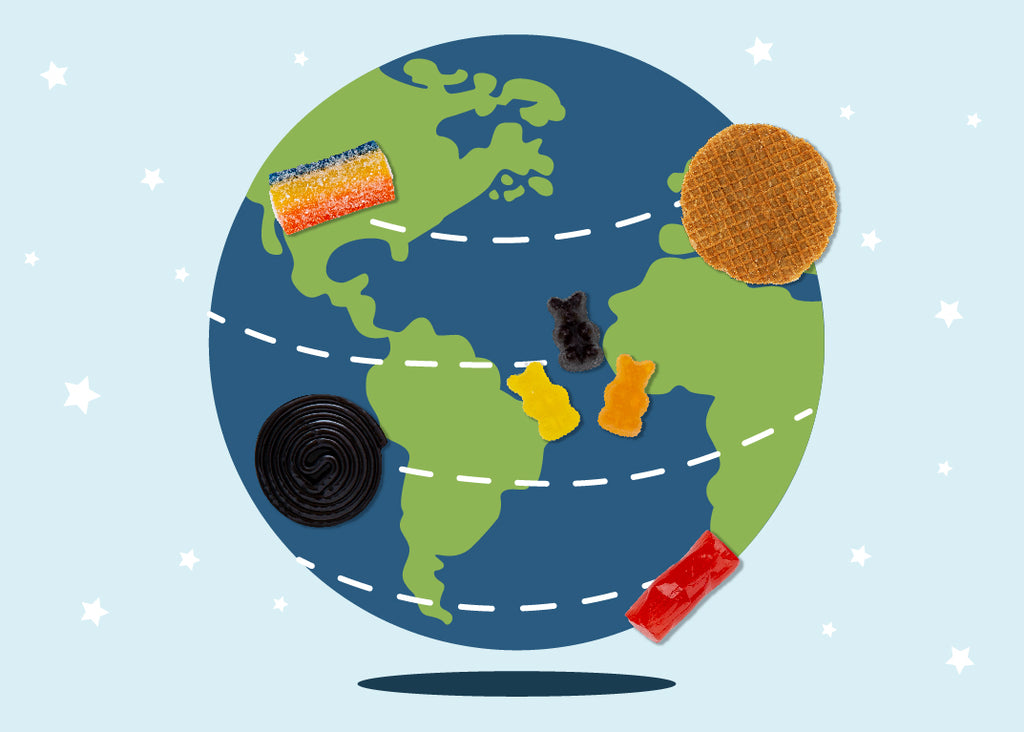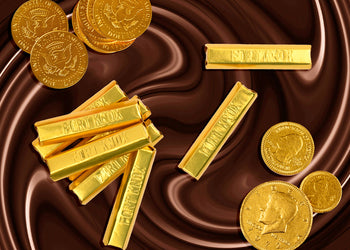Educate

Posted on: |
Candy Around the World: Explore Candy-Making Techniques from Different Countries!
We love all things candy, and candy comes from all over the world! Gerrit J. Verburg is proud to offer sweets and treats from Europe and beyond. These candies are delicious in their own right, but how are they made? What makes them so tasty? Check out candy-making techniques from around the world, paired with a little bit of history, below!
How are Swiss, Italian, and Belgian Chocolates made?
What do you think of when you hear chocolate? Italian, Swiss, and Belgian chocolate are all divine choices with an international reputation for silky smooth cocoa that makes our mouths water. The difference lies in the taste, the ingredients, and the process.
Swiss chocolate is smooth and creamy thanks to a technique called ‘conching.’ It homogenizes the product and helps create flavor, which also makes it more expensive and desirable at times. Italian chocolates, though, are handmade more often with cocoa beans from around the world that are expertly selected– and that can be time-consuming! Then there’s Belgian chocolate, considered to be some of the best in the world.
Belgian chocolate is made with only the finest cocoa beans, that are roasted to perfection and ground into a smooth paste. Combined with pure, fresh cream to create a ganache, the chocolate is poured into molds. Belgian chocolate is characterized by a higher chocolate content than in other countries, with the minimum level being 43%. The chocolate has to be 100% pure cocoa butter, with no added vegetable fats, to be true Belgian chocolate.
Who created gummy bears?
We’ve been known to welcome a few gummy bears to our candy collection from time to time, but where did they come from? Gummibären, better known as our favorite gummy bears, is a German candy invention by Hans Riegel!
Riegel was a confectionary worker for a different company initially, but he wanted to do things differently. He started his own sweets company, making hard, colorless candies using a copper kettle and marble slab in his kitchen.
He later founded the German sweet company Haribo and created gummy bears in 1922! Isn’t it fun to think about how gummy bears really haven’t been around as long as we may have thought? Think of all the new candy and candy techniques yet to be created!
How to make Dutch Stroop Wafels
Ah, one of our greatest from Gerrit’s Bakery! We love our Stroop Wafels, and they’re made with care in the traditional style of Netherlands confectionaries.
Stroop Wafels are Dutch and made with two thin cookies filled with warm caramel. A Stroop Wafel is a cookie with a delicious caramel syrup filling or ''Stroop'' that’s squeezed between two thin layers of freshly baked dough. Its wafer layers are made from a stiff dough of flour, butter, brown sugar, yeast, milk, and eggs that have been pressed in a hot waffle iron until it’s crisp.
The Stroop Wafel originates from Gouda, and it was first made during the late 18th century or early 19th century by a baker who used leftovers from the bakery, such as breadcrumbs, which were sweetened with syrup.
How old is Kintaro ame?
Kintaro ame is a cylindrical candy-making style from Japan! It’s made by mixing sugar and corn syrup with flavors, then the candy is rolled and stretched to make a design in the center. It’s made by layering different colored pieces of candy into a cylindrical face that’s fun for children and adults alike to find at the center.
In Japanese folklore, Kintaro was a child who was blessed with unbelievable power. Kintaro means Golden Boy. Kintaro ame candy has been around since the Edo period, which took place from 1603 to 1868.
Now, you can find Kintaro being made in candy shops all over Japan! It’s a wonder to this day to watch the candy-making process of layering something as simple as sugar and syrup together to make a face!
How is Salt Water Taffy made?
In the early 1800s, a man named John Ross Edmiston, the owner of a small boardwalk postcard shop in Atlantic City, New Jersey, hired a man named David Bradley to sell his taffy alongside Edmiston’s merchandise to boost sales.
During a terrible storm, the shop was flooded and Bradley’s soft taffy was soaked in ocean salt water. A young girl came into his shop asking for some and he joked about only having salt water taffy. There isn’t really a difference between salt water taffy and regular taffy.
Salt water taffy does not include salt water from the ocean, though it does usually call for salt and water, as well as sugar, corn syrup, butter, cornstarch, flavoring, and coloring. These ingredients – minus the flavoring, which is added later – need to be boiled together before the pulling process begins. Once the mixture has cooled, flavoring is added and the taffy is ready to be enjoyed!
Where did sour candy come from?
Last but not least, sour candy! We have plenty of sour candy that we would love to share with you. Have you ever wondered, though, why we love sour candy so much? Where does that sweet bite come from?
Sour candy comes from the Greeks, who were known for their love of indulgence and experimenting with how to indulge in new and unique ways. Using ingredients like honey, lemon, and other citrus fruits to create mouth-puckering confections, they experimented with various combinations to create a delicacy that balanced between sweetness and acidity.
From there, super sour candies can be traced to the 1950s and 1960s. A perfect example is Lemonheads, sour lemon-flavored candies, that were made with real lemon juice. It really makes you think of the iconic pucker face, and we’ll always go for more. Our tastebuds love the bite and relief of sour candy!
Did We Miss a Technique?
These are just a few of the unique candy-making techniques from around the world! We’re proud to offer a variety of candies from different countries to teach others about different cultures at times and connect people through something truly sweet.
We hope you learned something new about your favorite sweet or found a new candy that you want to try someday. If we missed one or there’s something new we need to know about, contact us so we can write about your favorite candy!



